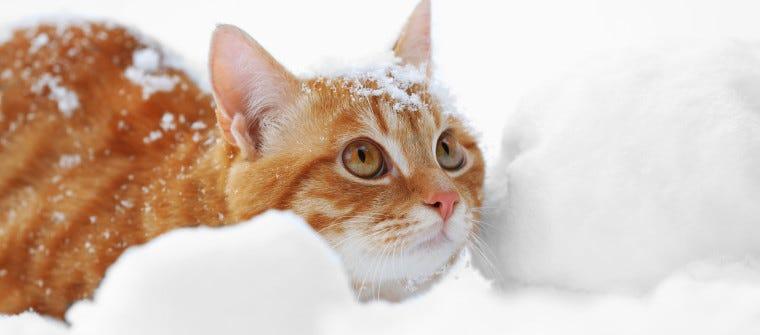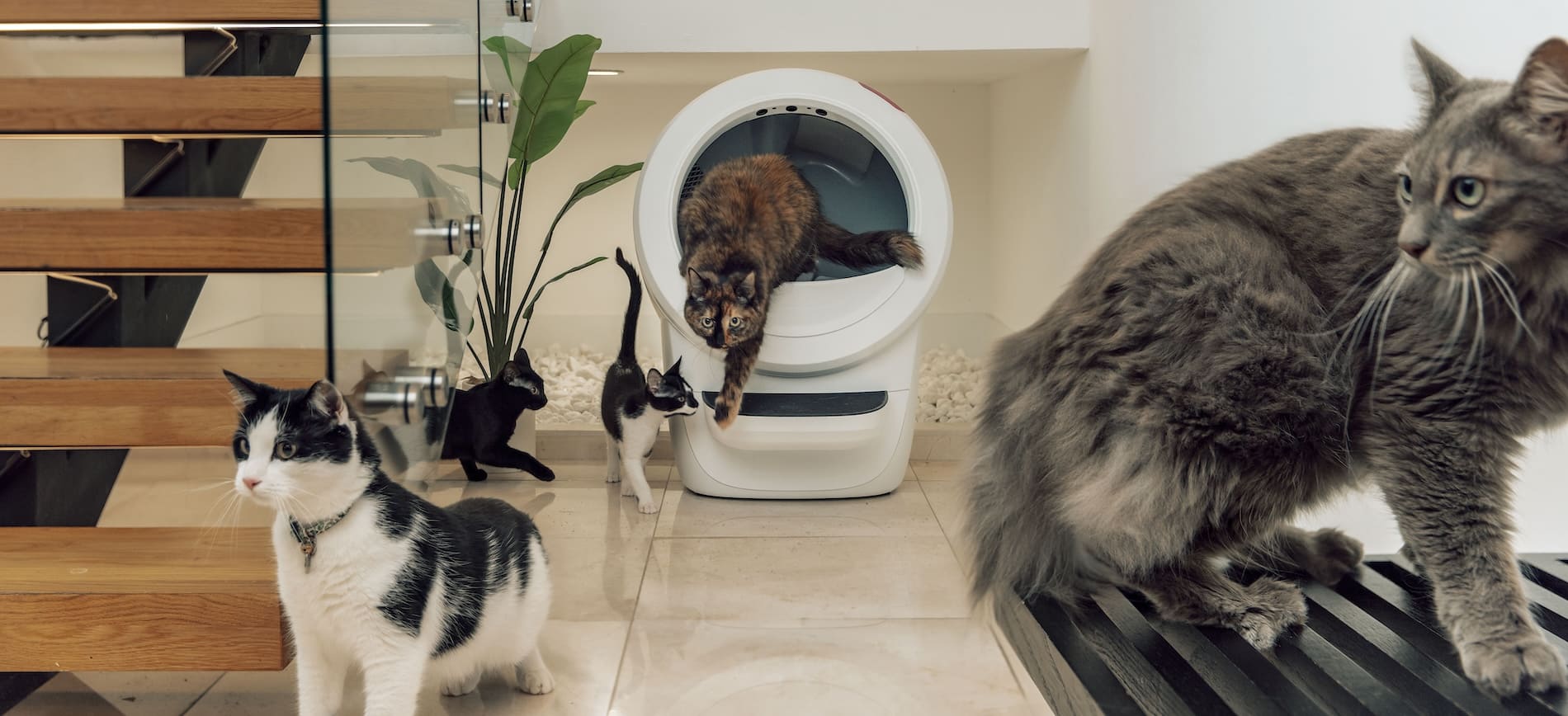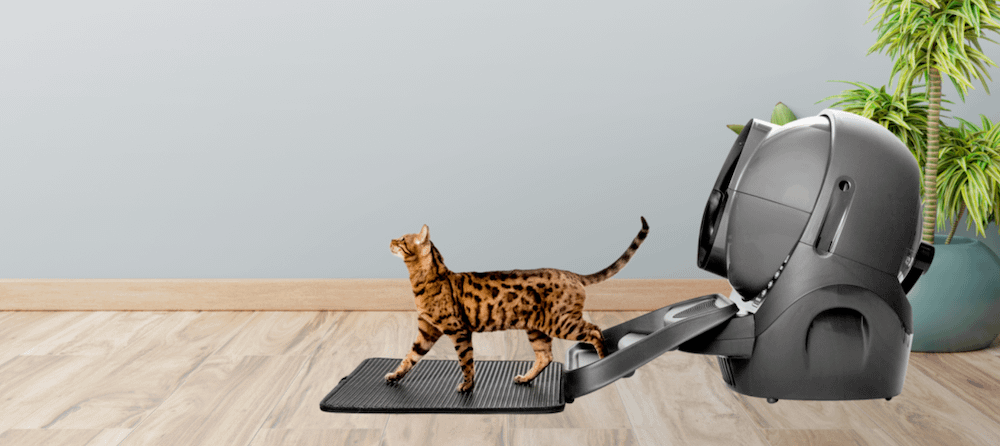Many people that manage feral cat colonies do not provide shelters for them in the winter months because they think cats are able to find a warm spot somewhere. The truth is, outdoor cats often suffer through the long winter nights when the sun goes down. Many older, frail, and young cats and kittens die when the temperatures drop and it stays very cold for several days or weeks.
Sunset Felines is a non-profit organization dedicated to improving the lives of homeless and abandoned cats in West Columbia, South Carolina since 2001. Director Frankie Kelly-Johnson offers these tips to help humans provide some warmth for outdoor kitties this season.
Easy and Inexpensive DIY Outdoor Kitty Shelters
We use 18-gallon storage boxes (Rubbermaid or any well made 18-gallon size box) in neutral colors that blend in with the earth: brown, green, gray, etc. We then cut a 5” x 7” rectangular opening on the small end of the box that starts 2” up from the bottom. Draw out the 5” x 7” opening using a ruler, then score it with a sharp razor knife, and gently push out the cut panel. This is where the cat will enter and exit its sleeping box.
Next, cut a small carpet remnant to fit the bottom of the box. Use warm fleece throws—the thicker ones are warmer—and bunch them up around the sides and flatten the middle down. We purchase fleece blankets from thrift stores.
Put the top on the box and place it in a heavily wooded area under the trees or low growing dense shrubs. Turn the box opening toward the morning sun, so the cats have a warm dry place during cold winter days.
To block cold wind and rain, use a Plexiglas panel and angle it in front of the opening. Plexiglas works better since cats can see approaching predators through it, and will be more likely to enter the shelter.
For extra protection from rain or moisture blowing in, cut a piece of plywood, Plexiglas, or light weight roll roofing to about 12” wide and place it on top of the box. It will act as an overhang and the cats won’t get wet on rainy days.
We then place the sleeping boxes onto wooden storage pallets that you can get from warehouses and stores. This way the boxes are up off the cold ground and it is less likely that rainwater, leaves, and bugs will get in. The outer sides of the pallets also provide nice places for the cats to sit and warm themselves on sunny warm days.
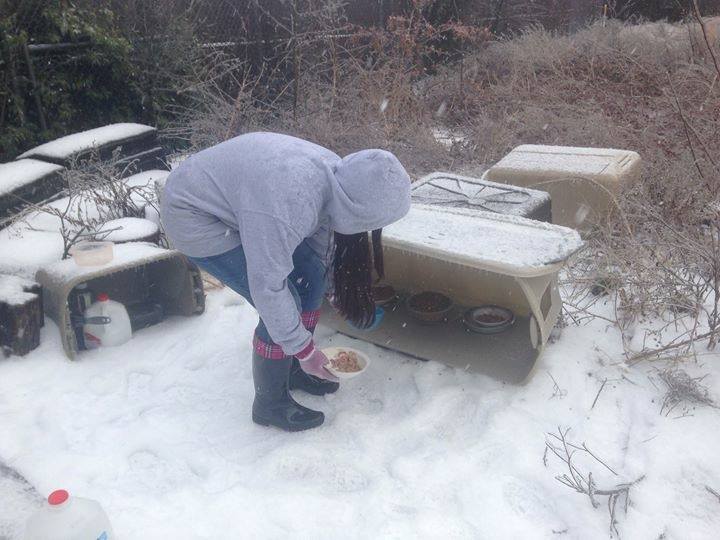 Sunset Felines DIY shelters for outdoor cats
Sunset Felines DIY shelters for outdoor catsThese sleeping storage boxes are inexpensive, durable, and waterproof. Another inexpensive, but great sleep box choice is extra-large Styrofoam coolers, since they are insulated and stay warm in the winter and cool in the summer.
If you have feral cats in your yard and you have electrical outlets outside, you can put a heating pad in the sleeping box. Cut a small hole in the end of the box, feed a waterproof outdoor electrical cord through, and place a heating pad between the carpet square and blanket. Turn it on to a low setting and use a timer to have it come on at dusk and go off the next morning. Be sure to place it in a dry, covered area like on a porch, covered patio, storage shed, etc. The cats will stay toasty and warm even on the coldest nights. Be sure to check the heating pad regularly for wear and tear, and replace it when needed.
Food and Water Access
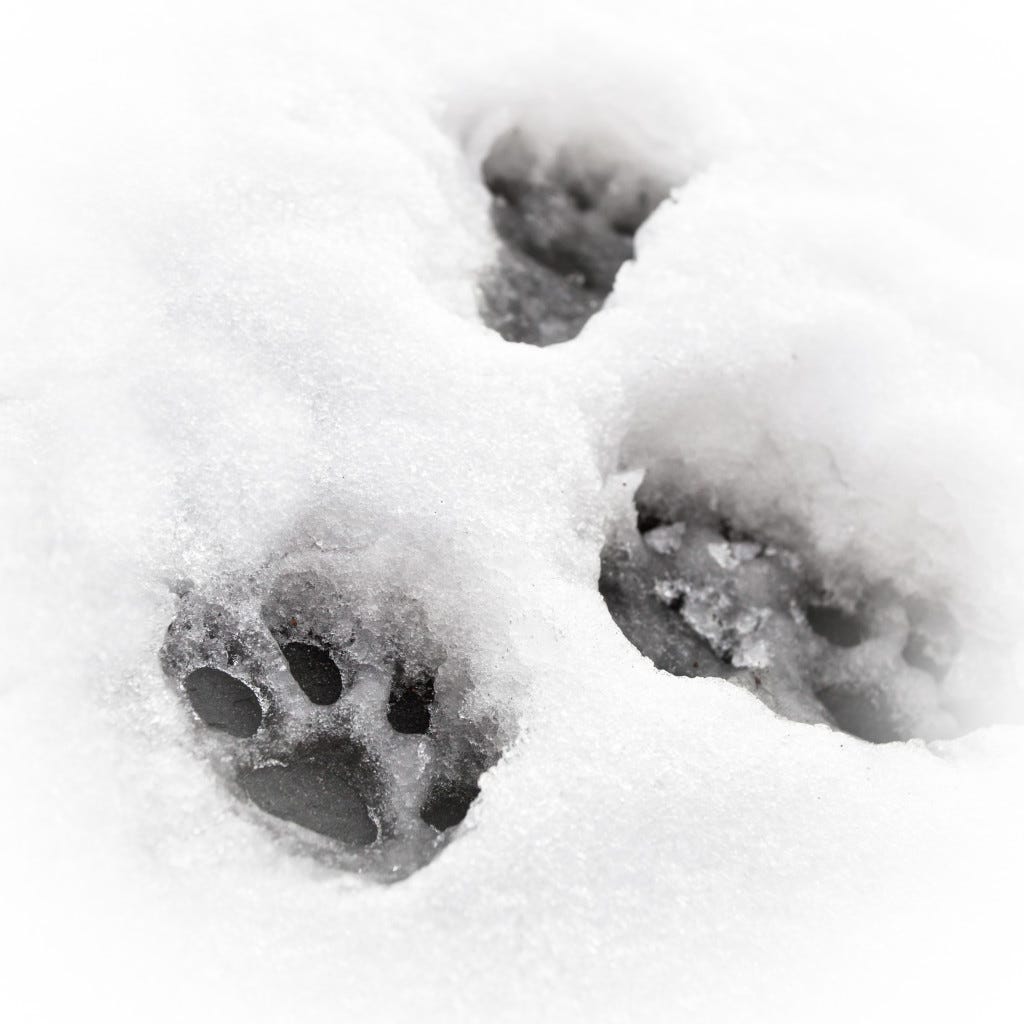 Feed outside cats heavily in winter so they gain extra body weight to keep them warmer. Cats eat more when it’s colder, so be generous. We put out both wet and dry food year 'round. Use glass, heavy bowls for wet and dry foods, and change out daily. Old crock pots make great water bowls since they are heavy and deep and will not tip over from nighttime wildlife. Feed cats at the same time each day; they will quickly learn your schedule and be waiting.
Feed outside cats heavily in winter so they gain extra body weight to keep them warmer. Cats eat more when it’s colder, so be generous. We put out both wet and dry food year 'round. Use glass, heavy bowls for wet and dry foods, and change out daily. Old crock pots make great water bowls since they are heavy and deep and will not tip over from nighttime wildlife. Feed cats at the same time each day; they will quickly learn your schedule and be waiting.
Since canned food freezes quickly, do not leave it in your car overnight; always keep it inside until you go out to feed. Remember, water freezes quickly, so be prepared. Take or keep extra water bowls with you and check it often. Cats cannot drink ice!
Extra Tips

- Do not use cotton fabric in the winter. Sheets are great for summertime.
- Do not use cardboard boxes. Place boxes in private, woody areas where cats can feel safe.
- Be sure to weigh down the lids with a brick or a heavy board on windy days.
- Neutral-colored tarps can be draped over the sleep boxes if you have several together. This adds extra protection against wind and rain.
- If you have trees with low, wide-growing limbs, you can put up wooden bracing and secure your sleep box up into the trees since cats like to be up high and away from roaming predators.
- Be sure to check blankets/bedding often to make sure they are dry and clean. Wash and replace them as needed. You can also dust the box and blankets with Diatomaceous Earth, a natural flea and insect repellent, that is safe for animals. Use food grade DE to help rid cats of fleas, worms, etc. Mix about ¼ teaspoon DE into food per cat.
Always check your shelters and keep them dry and clean. Stock up on fleece blankets and throws and keep extras in your supply boxes in case you need one in a hurry. Remember, when the sun goes down, we all want a warm and dry place to sleep during the long winter nights.
Guest post by Ramona Chisolm. This article originally appeared in Southern Paws & Tails Magazine, South Carolina's quarterly magazine for pet lovers. It encourages responsible pet care and promotes the rescue and adoption of shelter pets. They offer up-to-date, valuable information about the health and well-being of dogs and cats from reliable sources, reputable organizations, and animal specialists.
Recommendations
